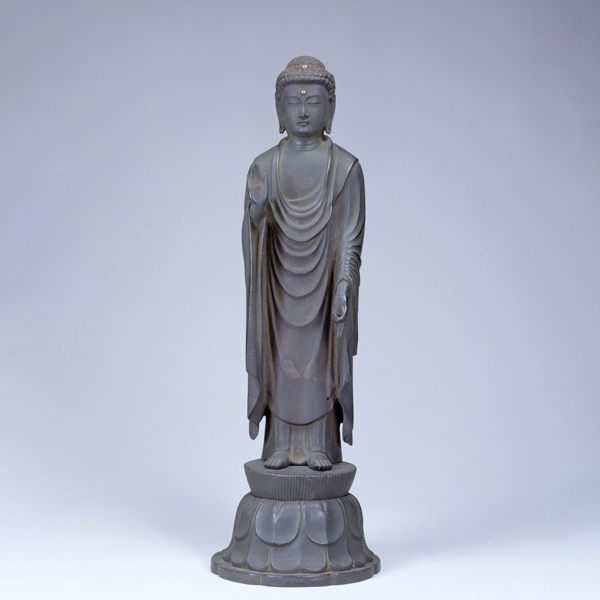彫刻
-

阿弥陀如来立像(善光寺式三尊像中尊)
鎌倉時代・文永2年(1265)本館 11室
2024年10月1日(火) ~ 2024年12月1日(日)江戸時代以前の日本の彫刻は、寺院や神社に安置された仏像、神像、肖像で占められています。仏教の伝来以降、仏像やその影響を受けた神像などが、都があった奈良や京都を中心につくられるようになりました。この部屋では、奈良の地に伝わった仏像を中心に、様々な種類の尊像からなる仏像の姿と比較しながら、ご覧いただきます。
| 指定 | 名称 | 員数 | 作者・出土・伝来 | 時代・年代世紀 | 所蔵者・寄贈者・列品番号 | 備考 | |
| おすすめ | 重文 | 菩薩立像 | 1軀 | 鎌倉時代・13世紀 | C-20 | ||
| 十一面観音菩薩立像 | 1軀 | 平安時代・9世紀 | C-1880 | ||||
| おすすめ | 重文 | 大黒天立像 | 1軀 | 快兼作 奈良・東大寺伝来 | 南北朝時代・貞和3年(1347) | 文化庁蔵 | |
| 阿弥陀如来立像 (善光寺式三尊像中尊) | 1軀 | 鎌倉時代・文永2年(1265) | C-1109 | ||||
| 不空羂索観音菩薩立像 | 1軀 | 鎌倉時代・13世紀 | 奈良・法隆寺蔵 | ||||
| おすすめ | 重文 | 大日如来坐像 | 1軀 | 平安時代・11~12世紀 | C-311 | ||
| 不動明王立像 | 1軀 | 平安時代・12世紀 | C-312 | ||||
| 菩薩立像 | 1軀 | 香川県大川郡丹生脇屋庵伝来 | 平安時代・10~11世紀 | C-1620 | |||
| 重文 | 十一面観音菩薩立像 | 1軀 | 平安時代・9世紀 | 奈良・秋篠寺蔵 | |||
| 地蔵菩薩立像 | 1軀 | 鎌倉時代・13世紀 | C-332 | ||||
| 帝釈天立像 | 1軀 | 平安時代・10世紀 | C-308 | ||||
| おすすめ | 四方四仏坐像 | 4軀 | 旧寛永寺五重塔安置 | 江戸時代・寛永16年(1639) | 東京都蔵 |
